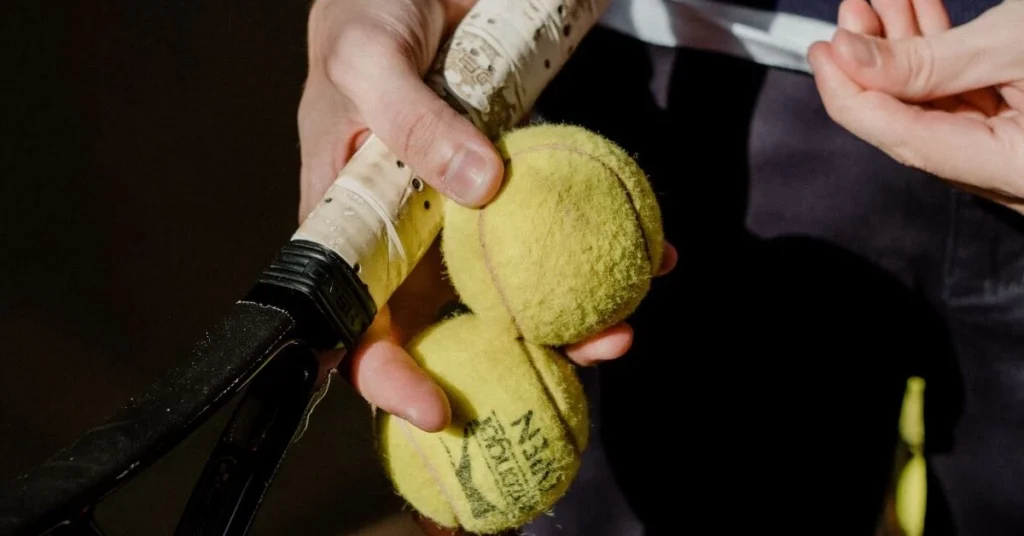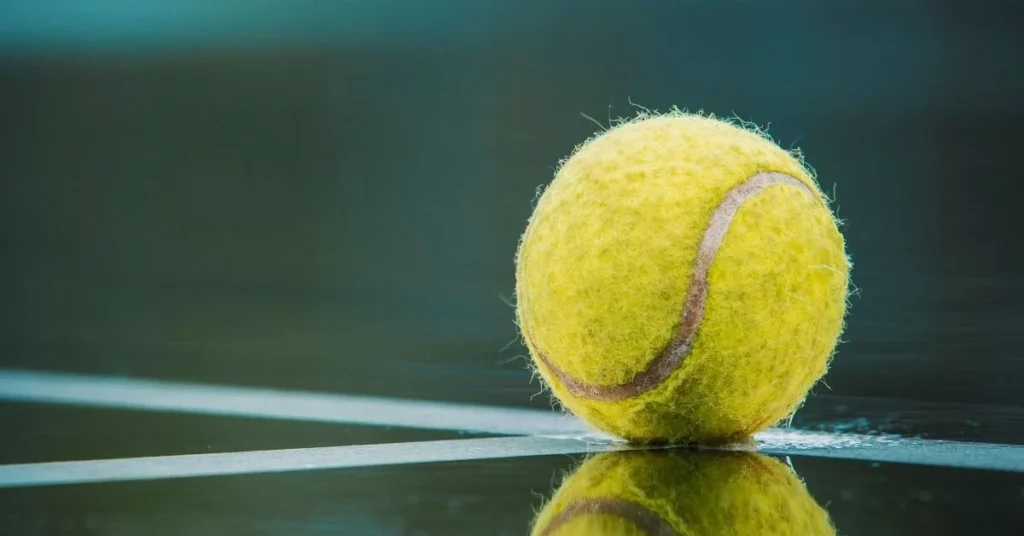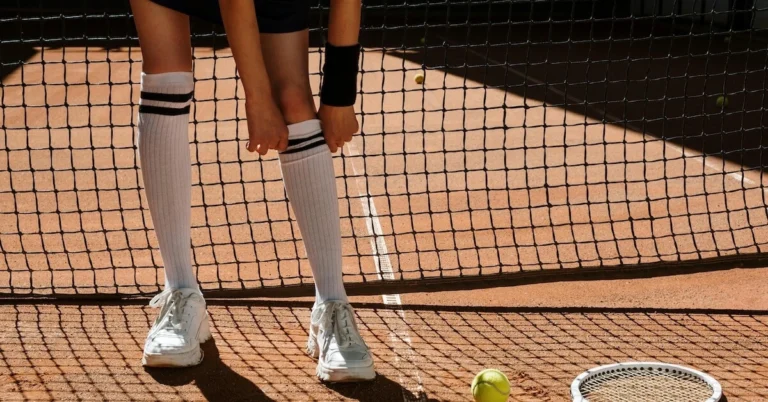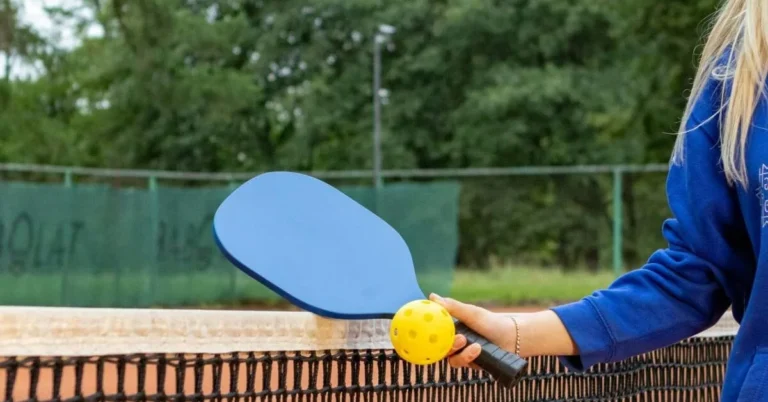Over time, tennis balls lose their pressure and bounce, making them less effective during play. It is important to know when to replace tennis balls to ensure that you are playing with the best equipment possible.
Generally, you should replace tennis balls after every seven to nine games in professional tennis matches. This ensures that the balls are fresh and not too worn out. However, the frequency of ball replacement can vary depending on several factors, such as the level of play, the court surface, and the humidity levels.
Let’s dive into the intriguing world of tennis ball maintenance and explore the art of knowing “When to Replace Tennis Balls.” Join me on this light-hearted yet informative journey as we uncover the secrets to keeping your game fresh and enjoyable.
Understanding Tennis Balls
Tennis balls are an essential part of the game of tennis. They come in different types and brands, each with its unique characteristics. The two primary types of tennis balls are pressurized and pressureless.
Pressurized tennis balls are the most common type of tennis ball used in the game. They are sold in pressurized cans, which help maintain their pressure and bounce. The pressure inside the can keeps the ball firm and bouncy. Once you open the can, the pressure inside the ball starts to decrease, and its bounce and performance begin to deteriorate. Therefore, it is crucial to use pressurized tennis balls soon after opening the can.
On the other hand, pressureless tennis balls do not come in pressurized cans. They are made of solid rubber and are designed to last longer than pressurized tennis balls. They do not lose their bounce or performance over time, making them an excellent choice for practice sessions. However, they are not suitable for competitive matches as they do not have the same level of bounce and consistency as pressurized tennis balls.
When it comes to choosing a brand of tennis balls, it is essential to consider the quality and durability of the ball. Some brands are known for their high-quality tennis balls that last longer and provide better performance. It is also important to consider the packaging of the ball. Some brands sell their tennis balls in sealed tubes to maintain their pressure and bounce.
5 Signs of a Worn Out Tennis Ball

As you play with a tennis ball, it undergoes wear and tear, and eventually, it wears out. So, how do you know when it’s time to replace tennis balls?
1. Loss of Bounce
One of the most obvious signs that your tennis ball has gone bad is the loss of bounce. Tennis balls are designed to have a certain level of elasticity, which allows them to bounce back after being hit. However, over time, the rubber inside the ball can break down, causing it to lose its bounce. The loss of bounce can also be caused by the accumulation of dirt and moisture on the surface of the ball, which affects its ability to rebound. If you notice a significant decrease in the ball’s bounce, it’s time to replace tennis balls.
2. Squeeze Test
Another way to tell if a tennis ball is worn out is by doing a squeeze test. Squeeze the ball with your hand and see if it compresses easily. If the ball feels soft and squishy, it’s a sign that the rubber inside has deteriorated, and it’s time to replace tennis balls.
3. Sound Test
A worn-out tennis ball also produces a different sound when it hits the ground or racket. If you notice that the ball produces a dull thud instead of a sharp pop, it’s a sign that the ball has lost its pressure and you should replace tennis balls.
4. Felt Wear and Tear
The felt on the surface of the ball is also an indicator of its condition. If the felt is worn out, it’s a sign that the ball has been used extensively, and it’s time to replace tennis balls. Check for the presence of fur or fuzz on the ball’s surface, which indicates that the felt has started to wear off.
5. Cracks and Smoothness
Check for any cracks on the surface of the ball, which is a sign of its age and wear. A smooth surface also indicates that the felt has worn out, and the ball has lost its grip and is no longer suitable for playing.
Replace Tennis Balls: Influence Condition on Gameplay
The condition of tennis balls can greatly affect gameplay. As a tennis player, you want to make sure that the balls you use are in good condition to maximize your performance.
| Speed and Spin | The condition of tennis balls can affect the speed and spin of the ball. New tennis balls tend to be faster and have more spin, making it easier to hit powerful shots and create more spin. As the balls get older, they tend to slow down and lose their bounce, making it harder to hit powerful shots and create spin. |
| Performance | The condition of tennis balls can also affect your overall performance. New tennis balls tend to be more responsive, making it easier to control your shots and hit with accuracy. Older tennis balls can be less responsive, making it harder to control your shots and hit with accuracy. |
| Ball Changes | Professional tennis players change balls after every seven to nine games to ensure that the balls are fresh and not too worn out. This ensures that the balls maintain their responsiveness and bounce, allowing players to perform at their best. In amateur matches, it is recommended to change the balls after every set to ensure that the balls maintain their quality. |
| Serving | The condition of tennis balls can also affect your serving. New tennis balls tend to be faster and have more spin, making it easier to serve with power and accuracy. Older tennis balls can be slower and have less spin, making it harder to serve with power and accuracy. |
| Rally and Match | The condition of tennis balls can affect the length of rallies and the outcome of the match. New tennis balls tend to create longer rallies as they are more responsive, allowing players to hit more shots. Older tennis balls tend to create shorter rallies as they are less responsive, allowing players to hit fewer shots. The outcome of the match can also be affected by the condition of the tennis balls. If one player prefers new balls and the other prefers older balls, it can give an advantage to one player over the other. |
When to Replace Tennis Balls
As a tennis player, you should be aware of the importance when to replace tennis balls. Over time, tennis balls lose their bounce and become less responsive, which can affect your game.
| Frequency of Use | The more frequently you play tennis, the more often you should replace tennis balls. If you play several times a week, you may need to replace tennis balls every few matches. On the other hand, if you only play once a week, you may be able to use the same tennis balls for several matches. |
| Length of Play | Another factor to consider is the length of time you play. If you play for several hours at a time, you may need to replace tennis balls more often than if you only play for an hour or two. |
| Condition of the Balls | The condition of the tennis balls is also important. If the balls are dead or have lost their bounce, it’s time to replace tennis balls. Dead balls can affect your game, as they won’t bounce as high or as consistently as new balls. |
| Number of Sets Played | It is generally recommended that tennis balls should be changed after every nine games or every two sets, whichever comes first. This ensures that the ball has the proper bounce and is not overly worn. Keeping up with regular ball changes also helps to extend the life of the ball, providing a better overall experience for the players. |
Factors Affecting Tennis Ball Longevity
| Court Surface Type | The court surface type can have a significant impact on the life of a tennis ball. Hard courts, such as concrete or asphalt, are the most abrasive surfaces and can wear out a tennis ball quickly. On the other hand, clay courts are softer and less abrasive, which can help prolong the life of a tennis ball. If you play on hard courts frequently, you may need to replace tennis balls more often than if you play on clay courts. |
| Playing Frequency | The more often you play tennis, the faster your tennis balls will wear out. If you’re a frequent player, you may need to replace tennis balls more often than if you only play occasionally. |
| Temperature and Humidity | Extreme temperatures and humidity can also affect the lifespan of a tennis ball. If you play in very hot or very cold weather, your tennis balls may wear out faster than if you play in moderate temperatures. Humidity can also affect the bounce of a tennis ball, so it’s important to store your tennis balls in a dry, cool place when not in use. |
| Type of Tennis Ball | The type of tennis ball you use can also significantly impact its lifespan. Tennis balls come in different types, including pressurized, pressureless, and hybrid. Each type has its own unique characteristics that can affect how long the ball lasts. For example, pressurized balls tend to have a shorter lifespan than pressureless balls, but they also provide a more consistent bounce. |
| Safety | It’s important to replace tennis balls when they start to lose their bounce or become too soft. Using old tennis balls can increase the risk of injury, as they may not bounce as expected and can cause players to slip or fall. Always prioritize safety when it comes to replacing your tennis balls. |
Tennis Balls in Competitive Play
When it comes to competitive play, tennis balls are an essential part of the game. In professional tennis, the balls are changed after every seven to nine games. This ensures that the balls are fresh and not too worn out. Balls are also changed between sets and at the start of the tie break. The ball-change procedure is usually done by the ball-boys and ball-girls.
In addition to changing the balls frequently, players at the professional level are also very particular about the type of ball they use. Different tournaments have different rules about which type of ball can be used. For example, the ATP World Tour uses the Wilson US Open ball, while the French Open uses the Babolat French Open ball. Professional players also have their own preferences when it comes to the level of pressure in the ball. Some players prefer a softer ball, while others prefer a harder ball.
During professional matches, the umpire is responsible for ensuring that the balls are changed at the appropriate times. The umpire will signal to the ball-boys and ball-girls when it is time to replace tennis balls. In addition to this, the umpire is also responsible for making sure that the balls are of the correct type and pressure.
Choosing the Right Tennis Ball

Choosing the right tennis ball is crucial for any player, whether you’re a recreational player or a professional. The right ball can make a big difference in your game, so it’s important to understand what kind of ball is best suited for you.
The first thing to consider is the kind of court you’ll be playing on. Different types of tennis balls are designed for different types of courts. For example, Type 1 balls are designed for use on fast surfaces such as grass, while Type 2 balls are designed for standard-speed surfaces such as hard courts, and Type 3 balls are designed for slower surfaces such as clay courts. Make sure you choose the right type of ball for the court you’ll be playing on.
Another thing to consider is the level of play. If you’re a beginner, you might want to consider using a low compression ball, which is easier to hit and has a slower bounce. If you’re a more experienced player, you might want to consider using a high compression ball, which has a faster bounce and is more challenging to hit.
It’s also important to consider the condition of your tennis balls. Over time, tennis balls can lose their pop and become flat, which can affect their performance. If you notice that your balls are losing their pop, it’s time to replace tennis balls. You can also check the condition of your tennis balls by pressing down on them with your hand. If they feel soft and don’t bounce back, it’s time to replace tennis balls.
Finally, consider the string tension of your racket. If your racket has a high string tension, you might want to consider using a softer ball that will absorb some of the impact. If your racket has a low string tension, you might want to consider using a harder ball that will provide more bounce.
Replace Tennis Balls or Repurpose Old Tennis Balls
When your tennis balls lose their bounce, it’s time to replace tennis balls. But what should you do with the old ones?
Recycle
Tennis balls are made of rubber and felt, which can be recycled. Check with your local recycling program to see if they accept tennis balls. If not, there are organizations that specialize in recycling tennis balls, such as RecycleBalls and ReBounces.
Donate
If your tennis balls are still in decent condition, consider donating them to a local school, assisted living facility, or animal shelter. The United States Tennis Association has a Recycled Tennis Ball Program that donates used tennis balls to not-for-profit organizations.
Pets
Old tennis balls can make great toys for your furry friends. However, make sure to supervise your pet while they play with the tennis ball, as they can be a choking hazard. Also, avoid giving your pet a tennis ball that has been cut open, as the rubber inside can be harmful if ingested.
Arts and Crafts
Tennis balls can be repurposed into a variety of arts and crafts projects. For example, you can cut a tennis ball in half and use it as a holder for your phone or tablet. Or, you can slice a tennis ball in half and use it as a grip for a jar lid. The possibilities are endless!
Chair Legs
If you have hardwood floors, you know how annoying it can be when your chairs leave scratches. One solution is to cut a tennis ball in half and place it on the legs of your chairs. This will help protect your floors and also make it easier to move the chairs around.
FAQ
How often are tennis balls changed at the US Open?
At the US Open, tennis balls are generally changed after every seven to nine games. This ensures that the balls are fresh and not too worn out. Balls are also changed between sets and at the start of the tie break. The ball-change procedure is usually done by the ball-boys and ball-girls.
How often are tennis balls changed at Wimbledon?
At Wimbledon, tennis balls are changed after every nine games. The balls are also changed at the start of each set and at the start of the tie break. The ball-change procedure is usually done by the ball-boys and ball-girls.
How long do tennis balls last for?
Several factors contribute to the longevity of tennis balls, including the material and quality of the tennis balls, the playing surface, and the storage conditions. Generally, tennis balls last for about two to three weeks before they start to lose their bounce and become less responsive. However, some tennis balls may last longer or shorter depending on the factors mentioned above.
Can you use old tennis balls?
Yes, you can use old tennis balls for practice or recreational play. However, old tennis balls may have lost their bounce and become less responsive, which can affect your game. If you want to get the most out of your practice sessions, it’s best to use fresh tennis balls.
What to do with old tennis balls?
There are several things you can do with old tennis balls, including donating them to animal shelters, using them to cushion the bottom of chairs or tables, or using them as massage balls. You can also recycle them through programs such as Recycleballs, which collects and recycles tennis balls.
You’re now equipped with the wisdom to know when it’s time to bid adieu to your faithful tennis balls. Whether they’ve lost their bounce, gone rogue on the court, or simply retired to the great tennis ball basket in the sky, knowing when to replace tennis balls is a game-changer.
So, when do you decide it’s game over for your tennis balls? Any hilarious ball retirement stories or clever ball replacement hacks you’d like to share? We’d love to hear your thoughts, anecdotes, or even your funniest tennis ball farewell speeches in the comments below!







